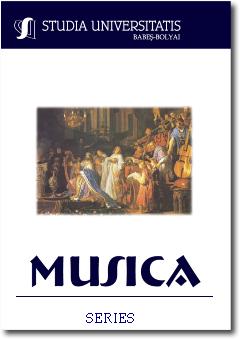WHERE TWO WORLDS MEET: LIGETI AND ROMANIAN FOLK MUSIC
WHERE TWO WORLDS MEET: LIGETI AND ROMANIAN FOLK MUSIC
Author(s): Bianca Ţiplea-TemeşSubject(s): Music
Published by: Studia Universitatis Babes-Bolyai
Keywords: Ligeti; Romanian Folk Music; composition; Bucharest; Cluj.
Summary/Abstract: It is hard to grasp how a composer acknowledged as a symbol of the 20th century musical avant-garde, re-formed in the laboratory of electronic music in Cologne at the end of the 1950s and always eager to take on fresh stylistical challenges, resorted to folk music as a source of inspiration. If the intersection with Hungarian and extra-european elements has been studied in depth, the connection with his Romanian folk heritage remains unexplored. The study will therefore show that Ligeti’s interest in this went far beyond composition, comprising transcriptions of Romanian folk music (during his stay at the Folk Music Institute in Bucharest, in 1949-1950) and also broad theoretical approaches, later published in Budapest. The analytical reading will show that long after Ligeti had repudiated Bartók’s influence, he appeared to revisit his predecessor in exploring folk music as source of inspiration. From early pieces, such as the Romanian Concerto and Baladă şi Joc, to Hora lungă (from the Viola Sonata), Hamburgisches Konzert, Automne à Varsovie and further on to the „mash up” of folk influences from all over the world which he promoted in his works from the beginning of the 1980s onwards, leit-motifs such as „bucium”, „bocet”, „hora lungă”, „Romanian folk instruments” etc., they all mark constant references in Ligeti’s manuscripts stored at the Paul Sacher Fondation in Basel. The study will demonstrate that the composer’s music engages in a subtle discourse with his roots, forging an underground connection between Western and Eastern European culture.
Journal: Studia Universitatis Babes-Bolyai - Musica
- Issue Year: 57/2012
- Issue No: 2
- Page Range: 85-97
- Page Count: 13
- Language: English

